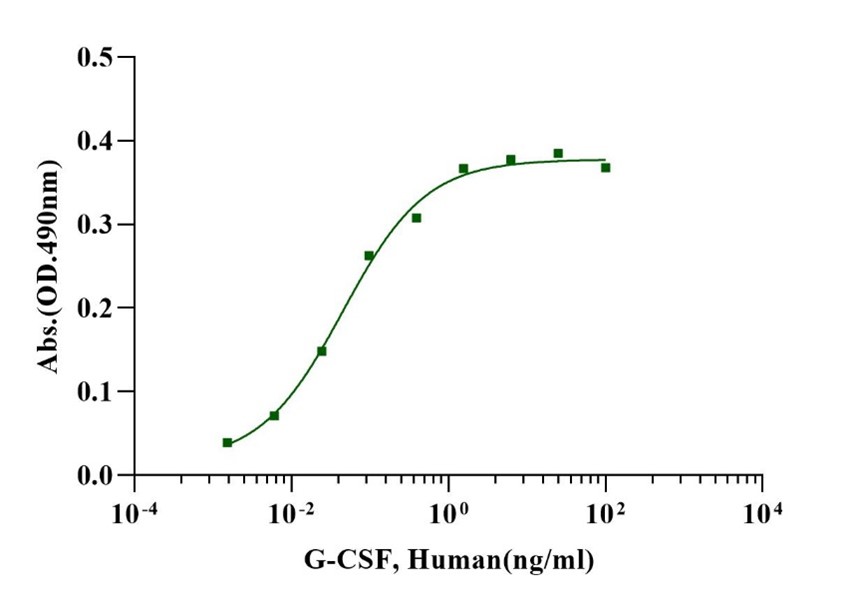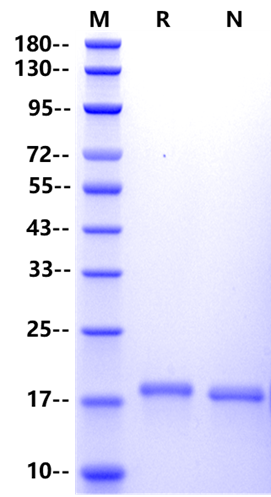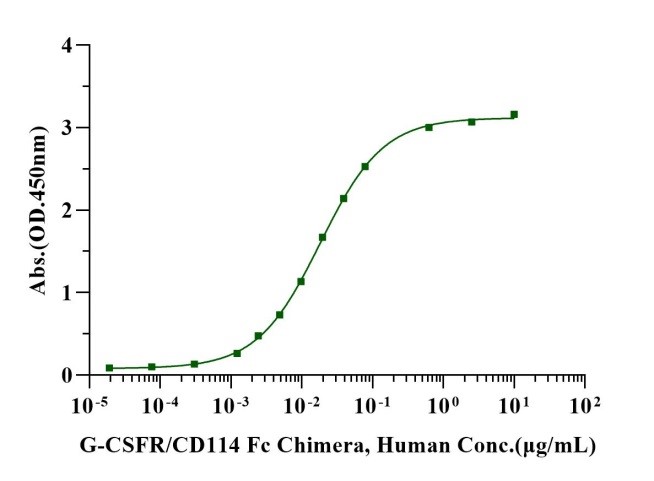1、Takano H. et al. (2007) G-CSF therapy for acute myocardial infarction. Trends Pharmacol Sci. 28(10): 512-517.
2、Klocke R. et al. (2008) Granulocyte colony-stimulating factor (G-CSF) for cardio- and cerebrovascular regenerative applications. Curr Med Chem. 15(10): 968-977.
3、Kang H J. et al. (2008) G-CSF- and erythropoietin-based cell therapy: a promising strategy for angiomyogenesis in myocardial infarction. Expert Rev Cardiovasc Ther. 6(5): 703-713.
4、Beekman R. et al. (2010) G-CSF and its receptor in myeloid malignancy. Blood. 115(25): 5131-6.
Granulocyte-colony stimulating factor (G-CSF) is a hematopoietic growth factor that stimulates the proliferation and differentiation of neutrophil precursor cells and enhances the functional properties of mature neutrophils. The mature human G-CSF (hG-CSF) is a glycoprotein with a molecular weight of approximately 19 kDa (174 amino acids) produced mainly by activated monocytes and macrophages. In the present scenario, hG-CSF has become one of the most widely used hematopoietic growth factor because of its proven efficacy against different forms of neutropenia caused mainly due to chemotherapy, radiotherapy and organ transplants. Mostly, it is recommended for the recovery from neutropenia after chemotherapy. The ability of G-CSF to mobilize stem cells from the bone marrow has found clinical applications in allogeneic and autologous transplantations. Also, the discovery of G-CSF as a neuroprotectant in neurological diseases like Alzheimer’s and Parkinson disease has garnered greater interests of researchers in the recent years.



Immobilized G-CSF, Human (Cat. No. UA040043) at 2.0μg/mL (100μL/well) can bind G-CSFR/CD114 Fc Chimera, Human (Cat. No. UA010537) with EC50 of 0.017-0.019μg/ml.

Immobilized G-CSF, Human (Cat. No. UA040043) at 2.0μg/mL (100μL/well) can bind G-CSFR/CD114 His Tag, Mouse (Cat. No. UA010219) with EC50 of 0.31-0.47μg/ml.